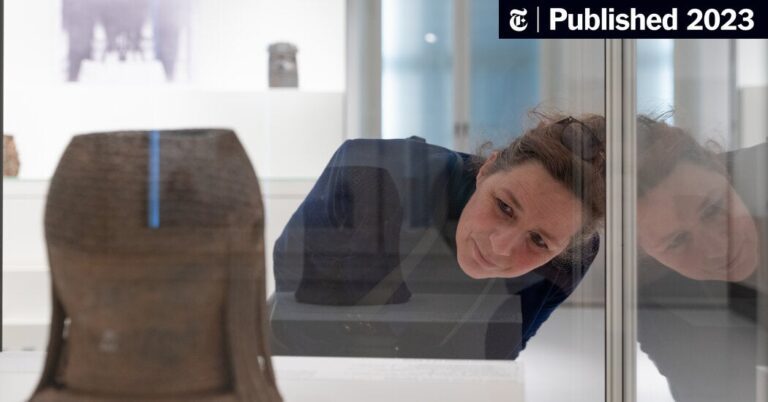“I don’t think they should remove things from where they came from,” said Isidora Labbé, a 23-year-old Chilean who came to see Hoa Hakananai’a, an ancient basalt statue, or moai, taken in 1868. by the crew of a British ship from Rapa Nui, or Easter Island, a Chilean territory in Polynesia. “For the people of the island, this is a very important thing,” said Ms. Labbé. “He is a guardian of peace and security.”
A new museum concept
The fact that the British Museum is one of the greatest attractions in the world, where everyone can see, in one place, the achievements of human history, is an argument against repatriation. But a consensus is emerging that such attraction should not come at the expense of cultural pillage. Meanwhile, new projects, like the Edo Museum of West African Art In Nigeria, where works of art repatriated from historic Benin will be kept, artists are reshaping their conception of what an ethnological museum should look like.
A vast complex located on the historic site of Benin City, the museum was designed by Ghanaian-British architect David Adjaye as “a kind of abstraction of what Benin City would have looked like before.” Searched through a joint archaeological project along with the British Museum, the site will include a research and collections centre, rainforest gardens and an artisan hall where contemporary artisans can sell their products. The main building of the museum will be a copy of the ancient Benin Palace, where visitors will be able to admire repatriated bronzes and learn about colonialism.
“You can walk through an area that presents nature as it would have been back then, and you can actually see the ancient moats and walls,” said Phillip Ihenacho, a Nigerian financier who is executive chairman of the proprietary trust. and operates the project, the gradual opening of which will begin next year. “You will understand that this is not an ancient civilization that has died. The craft tradition exists today. This has been transmitted.
Perhaps most importantly, Mr. Ihenacho said, the project offers a hopeful narrative to local people. “When they understand how sophisticated, advanced and large the Kingdom of Benin was compared to what was happening in Europe at the time, it can give people a sense of optimism for the future,” he said. he declared. “There is a way to talk about how things could be.”


